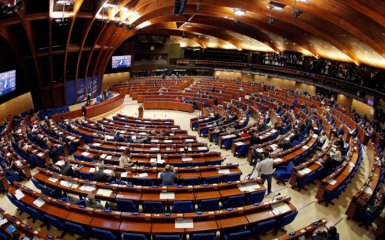On October 2, at the autumn session of the PACE in Strasbourg, a resolution was adopted in which the Council of Europe for the first time raised the issue of the release and further rehabilitation of Ukrainian prisoners, and also demanded that Russia comply with the provisions of international humanitarian law.
Points of attention
- The PACE resolution calls for the release and rehabilitation of Ukrainian prisoners in Russia under international humanitarian law.
- It supports the 'all for all' exchange idea and the involvement of organizations like the International Committee of the Red Cross.
- The resolution highlights the systematic torture of Ukrainian prisoners by Russian authorities, including horrific abuses documented in reports.
- There is a call for international cooperation to search and prosecute war criminals responsible for the mistreatment of Ukrainian prisoners.
- The resolution urges member states to prioritize the issue and provide expert and financial support for the rehabilitation of released prisoners.
For the first time, PACE adopted a resolution on Ukrainian prisoners in Russia
The resolution "Missing persons, prisoners of war and civilians held captive as a result of the aggressive war of the Russian Federation against Ukraine" was unanimously supported by all 74 deputies present in the hall.
The Assembly calls on the Council of Europe to ensure the priority of this topic in the international political agenda of all member states, calls on Russia to put pressure on the proper treatment of prisoners, in accordance with international humanitarian law, as well as to make efforts for their speedy release, social and medical rehabilitation and bringing them to responsibility of the Russian Federation.
The Assembly encourages the establishment of a more permanent mechanism for the exchange or release of Ukrainian prisoners of war and civilians held in the Russian Federation or in the temporarily occupied territories of Ukraine, with the active participation of the International Committee of the Red Cross and other relevant stakeholders.
PACE supports the idea of "all for all" exchange, that is, comprehensive exchange.
The document emphasizes that "torture, which is used by the Russian authorities in the Russian Federation and in the temporarily occupied territories of Ukraine, is widespread and systematic."
The document also reminds the Committee of Ministers of the Council of Europe that "partner states, including member states of the Council of Europe, can introduce packages of international targeted sanctions against Russian officials responsible for the illegal deprivation of liberty of Ukrainian civilians."
The Assembly calls upon Interpol, other international organizations and all States to facilitate the search and prosecution of war criminals.
PACE believes that "the Council of Europe and its member states could play an important role in providing expert and financial support for the rehabilitation of released prisoners by creating a special program that could be financed from the frozen assets of the Russian Federation.
A separate item in the resolution mentions the illegal detention by the Russian Federation of Ukrainian journalists, who are in terrible conditions, as well as imprisoned Crimean Tatars.
The Assembly emphasizes that the situation in temporarily occupied Crimea remains particularly difficult and calls on its members to engage their governments, civil society and media networks to raise awareness of the plight of Ukrainian journalists.
It also provides the latest data, according to which, as of September 2024, a total of 65,956 servicemen and civilians are registered as missing or captured by the Russian Federation. Only 3,672 people have been returned from Russian captivity since the beginning of the full-scale invasion, among them a third were considered missing in Ukraine because Russia, contrary to international obligations, did not provide information about them.
The resolution was submitted under the urgent procedure, the speaker was the head of the Ukrainian delegation to PACE Maria Mezentseva-Fedorenko.
Ukrainian prisoners of war are subjected to systematic torture at all stages of captivity in the Russian Federation
According to the OHCHR report, the Russians systematically torture and ill-treat Ukrainian prisoners of war.
Of the 174 prisoners of war interviewed, 169 testified that abuse was common during interrogations, admission to places of detention, and daily internment procedures. These testimonies are confirmed by other sources.
Torture includes beatings, electric shocks, sexual assault, strangulation, prolonged restraints, forced physical exercises, sleep deprivation, mock executions, and threats.
In particular, in Kherson, the occupiers repeatedly tortured the detained man, using beatings, strangulation, water torture, electric shocks, including genitals, and threatened castration. He was also raped with a metal object while applying electric current to his anus and genitals.
More on the topic
- Category
- Ukraine
- Publication date
- Додати до обраного


